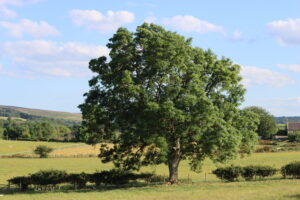West Yorkshire Combined Authority will spend £1.7m on natural flood defences to protect homes and businesses from severe weather conditions.
On Boxing Day 2015, parts of Yorkshire experienced extreme flooding that affected over 2,000 homes and 400 businesses. As a result, local authorities have taken various courses of action to ensure that this does not happen again.
The most recent prevention method is the installation of 76 leaky dams and the planting of 1,200 trees and 75 metres of hedgerow in the Upper Aire catchment area.
Leaky dams are wooden structures that are designed to slow down the flow of water before it reaches towns and village that are downstream.
This work is being led by volunteers from the Yorkshire Wildlife Trust.
The programme is also going to be monitored by the University of Leeds so that it can be replicated in other areas across the UK.
Suzie Knight from the Yorkshire Wildlife Trust said: ‘This is a fantastic project delivering catchment-wide benefits for both people and wildlife.
‘Trees and hedgerows are not only essential wildlife havens but improve soil quality, encouraging better infiltration and can reduce the volume of water reaching a watercourse as well as the speed at which it does so.’
Professor Joseph Holden, director of Water Leeds at the University of Leeds said: ‘We are really pleased to be supporting this important work which is delivering a wide range of benefits in addition to flood risk management.
‘Monitoring natural flood management interventions is vital as it allows us to understand what is happening and what difference to flood risk the natural management interventions have made, so we can further investment in such schemes in the future.
‘We devised monitoring standards and approaches for natural flood management to ensure the monitoring undertaken is robust and can be duplicated elsewhere. We are currently gathering evidence from headwaters where many natural flood management measures have been installed such as peatland restoration ponds and debris dams in streams.’
Photo Credit – Pixabay















